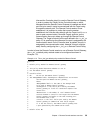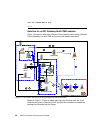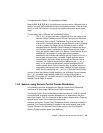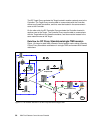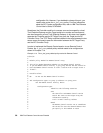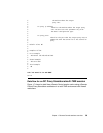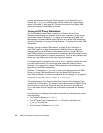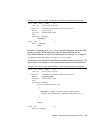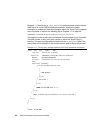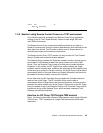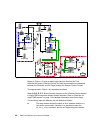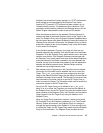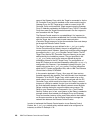Chapter 1. Remote Control sessions overview 41
has been informed of that on step F. The Remote Control server then
has informed the Controller (step K) to use the RC Target Proxy in
order to contact the Target. The Controller is able now to transfer the
connection request to the RC Target Proxy as it got its IP address.
When the RC Target Proxy receives the request containing the IP
address of the requested Target, it can start searching in the
rcproxy.route file for the RC Controller Proxy the Target is
connected to. In fact, this file contains a list of all distant Endpoints
and their assigned RC Controller Proxy and needs to be manually
customized. For more information about how to configure this file,
refer to 3.3.2, “Remote Control Proxy configuration” on page 104.
The RC Target Proxy then contacts the correspondent RC Controller
Proxy to forward the Target connection request. The RC Controller
Proxy uses the Target information stored in the first request to start a
session with the Target.
The Remote Control session is now established. It is important to
notice that once the session established, the Controller talks directly
with the Target, but it’s
not a peer-to-peer communication
(Controller-Target) anymore, as the communication flow must always
go through the Remote Control Proxies.
The Target is listening on port defined in the rc_def_ports policy.
On the Controller side, by default, the port is assigned by the
communication stack. However, these ports could be easily changed
by configuring the rc_def_ports Remote Control Policies. The RC
Target Proxy and the RC Controller Proxy are listening on the port
defined during the installation process. The port specified in the
rc_def_proxy policy must be the same as defined during the
installation process of the RC Target Proxy. The configuration of
these RC Proxies ports could be reviewed by editing the rcproxy.cfg
configuration file. However, if you decided to change this port, you
need to also review the rc_def_proxy policy. For more information
about the RC Proxies configuration files, refer to
IBM Tivoli Remote
Control User’s Guide
, SC23-4842
Sometimes, the Controller could be in a secure zone and managed by a local
Tivoli Endpoint Gateway and the Target could be in another secure zone and
also managed by a local Tivoli Endpoint Gateway. In this case, two firewalls
separate the Controller and RC Target Proxy from the Target and RC Controller
Proxy. The TFST Relay could be installed in the zone between the two secure
zones and used to pass the information from the RC Target Proxy to the RC
Controller Proxy



